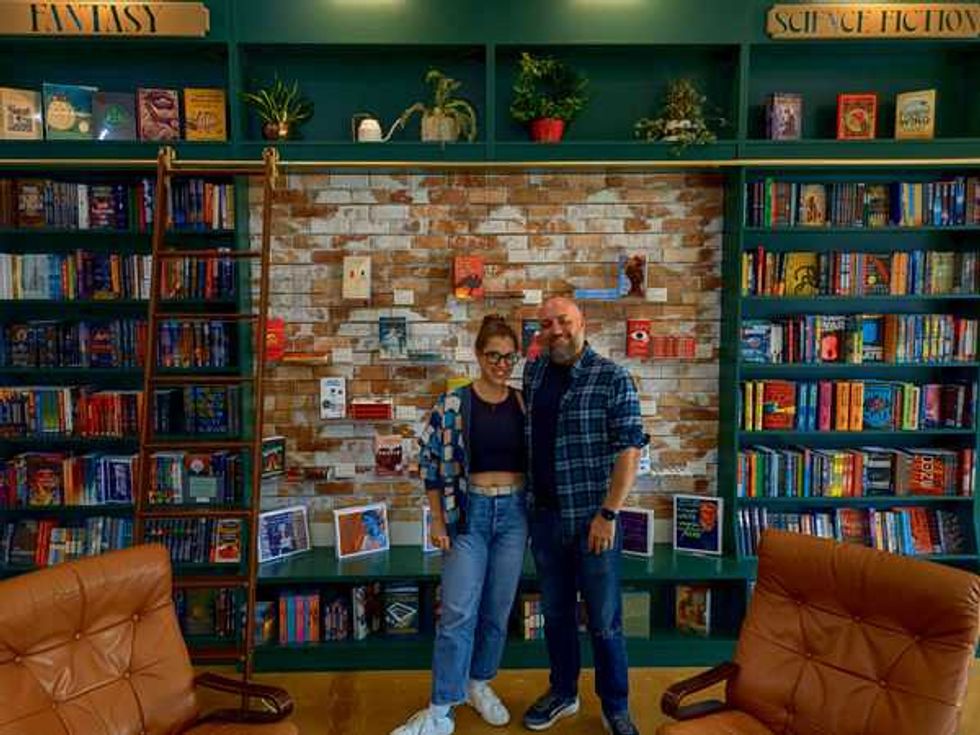Alamo City Art
Meet the creators of San Antonio's stunning public art
Public art is everywhere in San Antonio, from the Westside's famous murals to the city's public art program, which combine traditional forms of art with playgrounds, benches, and other public spaces.
We've already highlighted the most iconic works in Alamo City — now we turn to influential artists to discover their vision for public art.
Twyla Arthur
Mosaic artist Twyla Arthur admitted something about creating public art: It's labor-intensive. "I love working on a project, but I'm always happy when it's done," she said. "I hope that when I create a piece, it holds up visually. I want to create something that looks really good with the landscape."
Arthur has created many works in San Antonio and Austin, including Bernard’s Bench, installed along the River Walk North in 2009; Hope Springs, a sculpture at the Houston Street court fountain, built in 2002; and the new bus stop mosaic project at the entrance to the Blue Star Arts Complex on South Alamo Street, which she finished in March.
Arthur draws inspiration widely, from the jacaranda trees she saw while visiting San Miguel de Allende, Mexico, to leaves floating in water. She's currently pursuing more sculptural projects in San Antonio and teaching ceramics at St. Mary's University.
David Blancas
San Antonio artist David Blancas is known for a variety of art, from his dramatic murals conveying social, political, and cultural themes to paletas — popsicles he built with acrylic and resin on metal.
As a prolific painter, Blancas uses Polytab fabric to paint murals in the studio and fabricate them onsite, enabling him to build larger works of art in less time. "I'd rather work much smarter and harder," he said.
"I've been an artist for probably 25 years," Blancas said. "Project by project and piece by piece, I kind of engross myself in the subject matter. For the murals, every piece I do depends on the location and organization to get into the moment."
One piece of public art Blancas created is entitled Queen of the Spanish Missions. Located at Harlandale High School, it shows his rendition of tile work adorning Mission San José.
Blancas said he wants to do sculptural and three-dimensional work in San Antonio in the future through the city's capital improvements program.
"I want to break away from the conventional two-dimensional format to other elements that have movement, whether it's actual movement or interaction," he said. "I see place-making art as an integral part of impacting the community and contributing to the creative landscape."
Gabriel Dawe
Thread and steel is at the core of Dallas-based artist Gabriel Dawe's art. His new installation at the San Antonio International Airport, Plexus c18, comprises 90 miles of rainbow-colored thread that, from the right angle, gives the appearance of a prismatic airplane. The work, which is suspended from the ceiling above the Terminal A ticketing area, will be on view for three years beginning this October.
Dawe traced his idea for the work to memories of his childhood. "I remembered that growing up, my grandmother would teach my sister [to embroider], but she wouldn't teach me," he says. "It was very frustrating to me as an 8-year-old, and being a grown man, I was able to make my own choices, so I decided to revisit that frustration and teach myself to embroider."
The artist, who was born in Mexico City, Mexico, began experimenting with sculpture and textiles as a graduate student in Dallas and started making larger pieces as part of group shows with textile artists and architects. Drawing on sketches of the curves and arches in the airport ceiling, he had an idea of a paper crane, he said.
"My biggest hope is that it will give travelers to the airport a more pleasant experience," he said. "Traveling can be very demanding or tiring, and I really hope that it helps welcome visitors to the city in a positive way and gives them a little burst of joy when they see the piece."
James Wyatt Hendricks
James Wyatt Hendricks' most recent public artwork includes four steel benches at the Scobee Education Center at San Antonio College. Installed in 2015, the benches explore four different themes of science, technology, engineering, and mathematics (STEM).
With 30 years of experience as an artist and craftsman working in painting, bronze, stone, and metal, Hendricks' work is expansive. Some of his paintings and metalwork include birds, fish, and natural elements, and he draws from his favorite literature and poetry. To the viewer, his work might reflect the idea that life has many different sides and overlapping themes.
"My sculptures are inspired by the movement and forms you see in nature," he said. "Attention is given to all details and is an important element of my sculpture."
Hendricks' other public art projects include benches at UTSA that were installed in 2012, 12 history benches and one wall sculpture for the new hospital at Fort Sam Houston that went on display in 2010 and 2011, and six sculptural benches on Commerce Street on San Antonio's Eastside based on historical people and architecture.
"The ideas and inspiration for much of my work come from past and present and the industrial world we live in," Hendricks said. "The designs for the historic installation art and benches are inspired by history, community, culture, and location of their placement."
Hendricks also designs tree grates, mailboxes, statues, and other sculptures for private residences, schools, and museums.
Diana Kersey
Diana Kersey doesn't just create unique works of visual art. She incorporates the cycles of nature and the world she sees around her into both her clay pottery and architectural ceramics.
By using a limited palette of three different copper and iron glazes, she's created birds, insects, fish, flowers, and other earthy elements right in her backyard. In June 2011, she completed a public art project along the Mulberry Bridge near Brackenridge Park — 208 square feet of ceramic artwork depicting the life cycle of the Gulf Coast toad; she completed a similar project along the Millrace Bridge that September.
"I feel like San Antonio is my home, and this is my studio," she said. "I wanted to make a living off my work, and I've been very fortunate in all my public art and in that Public Art San Antonio (PASA) was willing to give me these opportunities."
Kersey is currently working on a public art project with VIA Metropolitan Transit involving the installation of ceramics at a bus stop located at East Cypress Street and Fredericksburg Road. The work will be part of an "urban oasis," with water drainage and conservation elements.
Louis Vega Treviño
Louis Vega Treviño can draw a complete work of art on a cocktail napkin in a few minutes, which partly explains why he's been able to create so many of them. The other part is a lifelong passion for art. "The key to being a successful artist is you have to live it," Treviño said.
The San Antonio artist began sketching freehand designs on small squares of paper and napkins before delving into canvasses. His work has been shown at countless exhibitions across the state and in New York City. He has owned his own art spaces, hosted art talks, and earned awards and recognition for work that appears in many buildings throughout San Antonio.
Treviño said he kept every napkin design he ever drew, and some have been reproduced as public art in San Antonio. One of his recent public art projects, "Fishing," went on display in Main Plaza in 2009 and featured 12 of his napkin designs. His most recent public work was an installation at the San Antonio airport in 2012.
He said he wants to continue making contemporary art, as well as producing more of his designs.
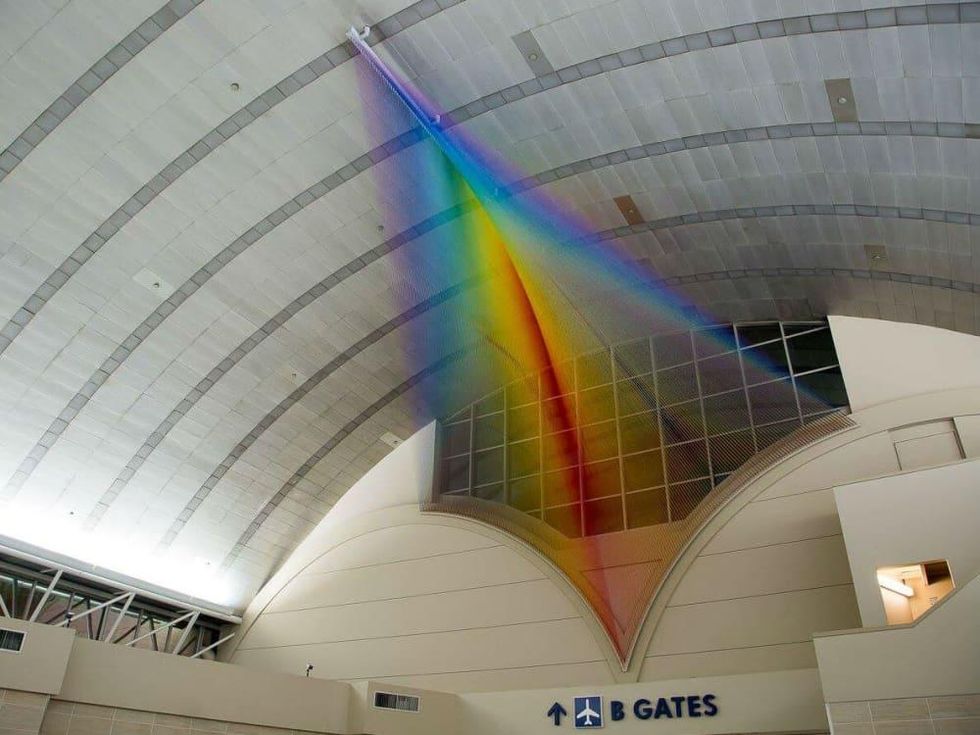
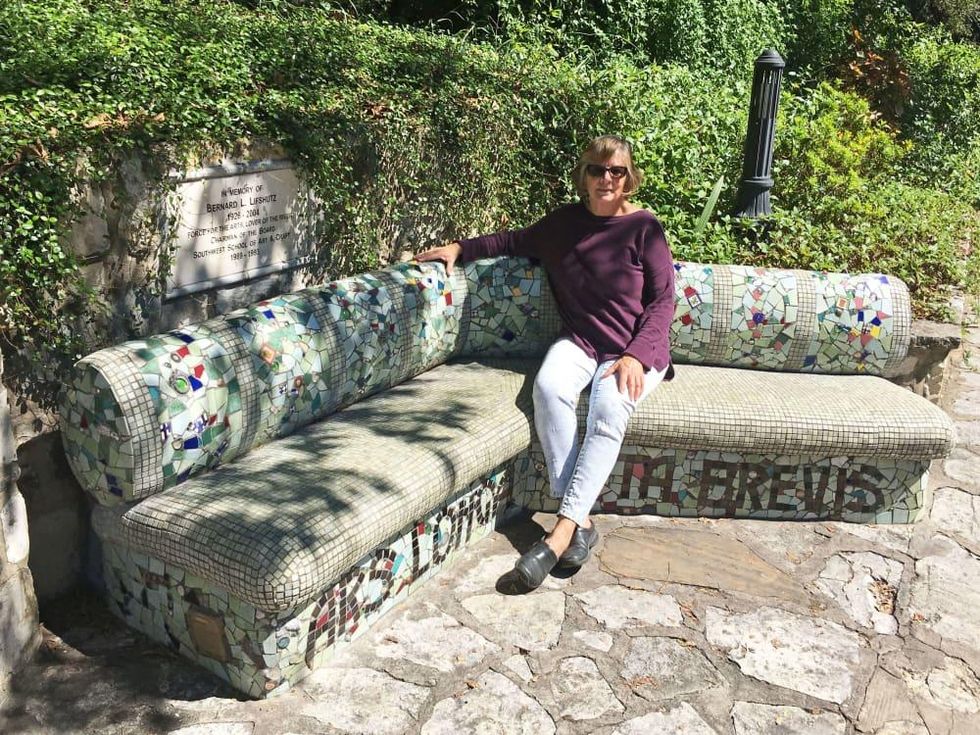
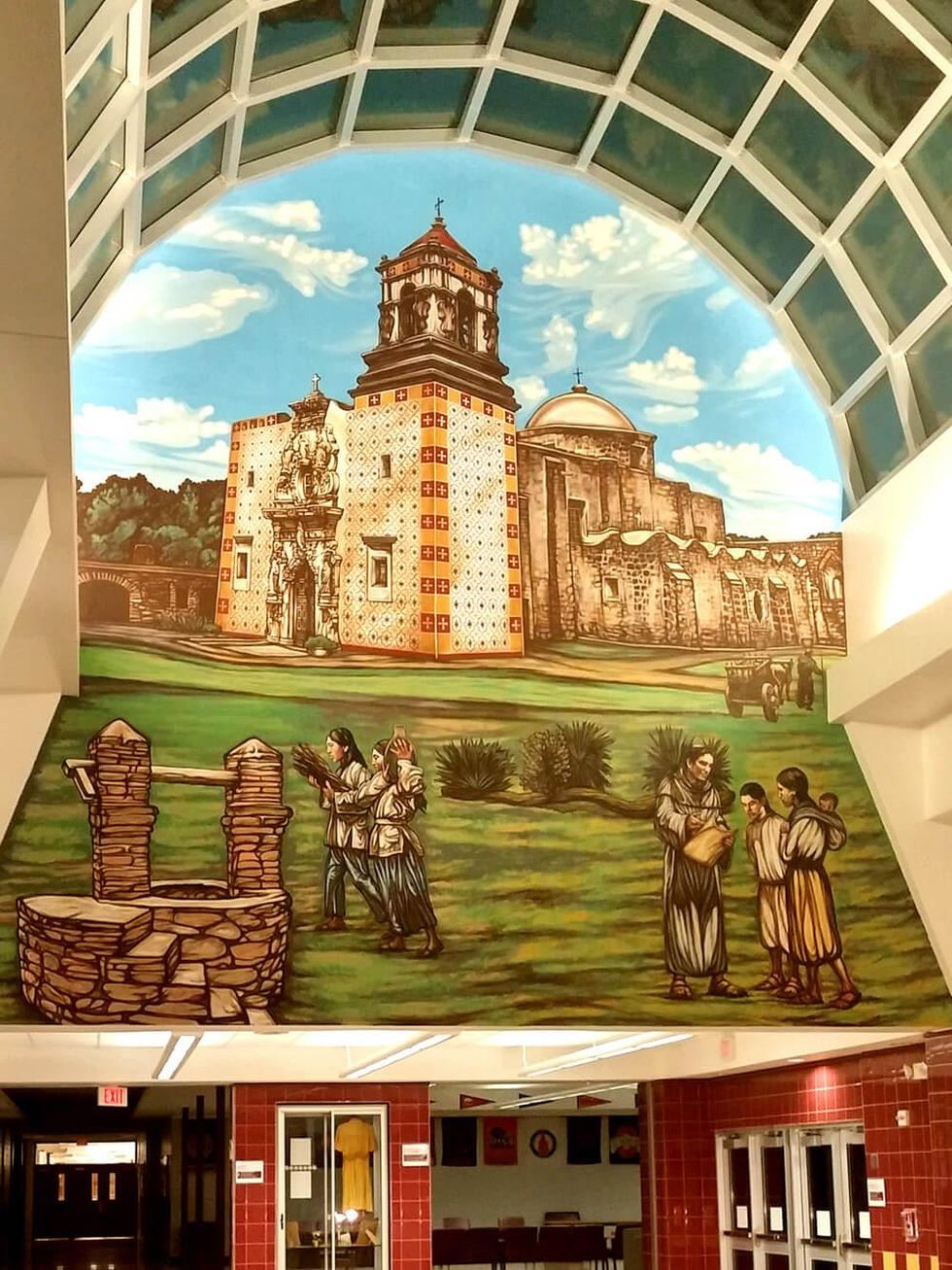
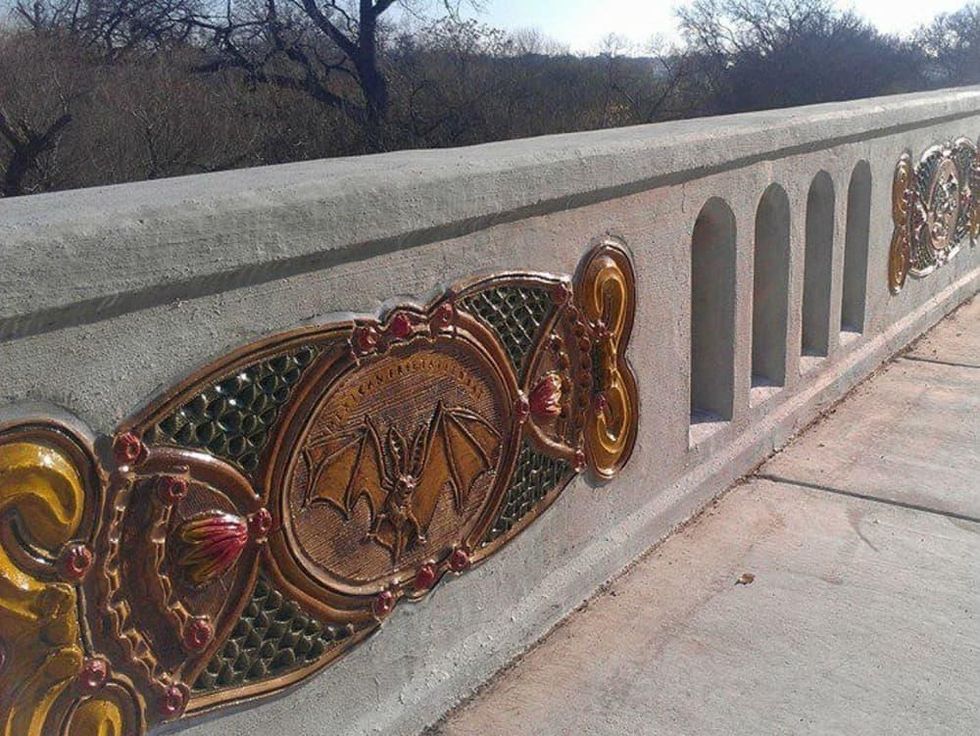

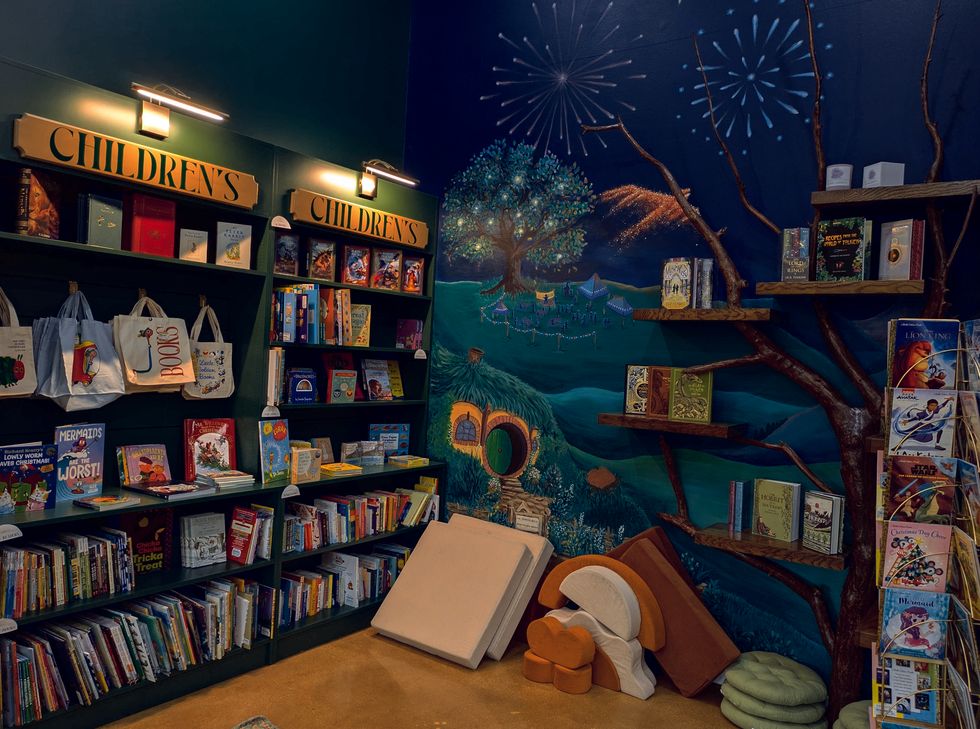 Book Nerd includes a whimsical children's area.Photo by Edmond Ortiz
Book Nerd includes a whimsical children's area.Photo by Edmond Ortiz Rhiannon Otero is one of four owners of Pages for Ages.Photo by Edmond Ortiz
Rhiannon Otero is one of four owners of Pages for Ages.Photo by Edmond Ortiz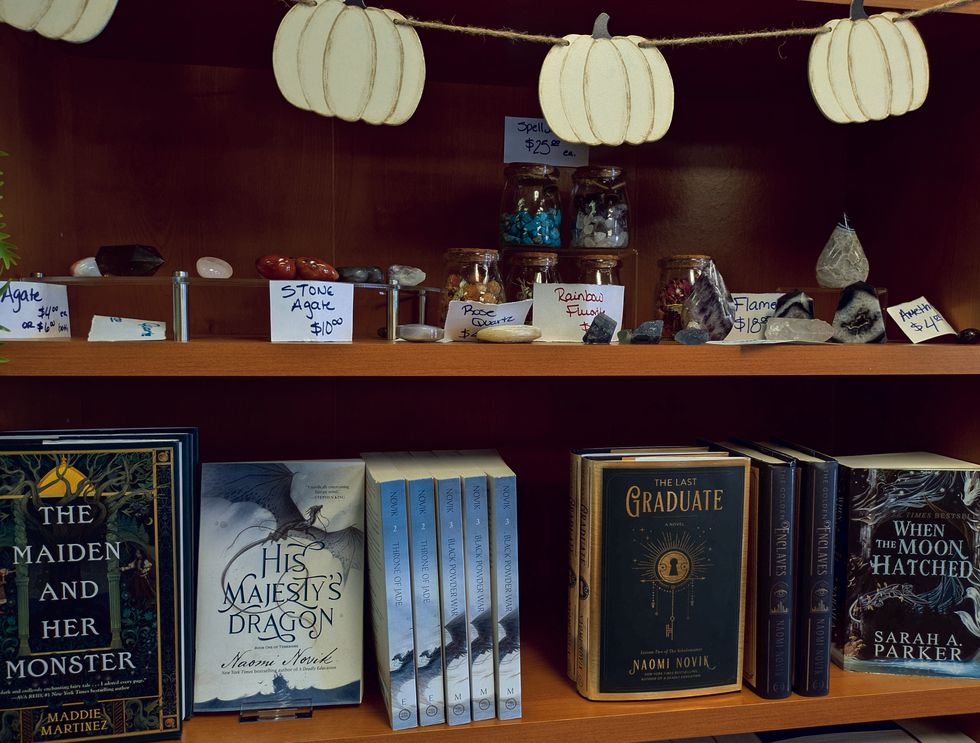 In addition to different kinds of books, Pages for Ages offers homemade pastries, handcrafted gifts, and stones and crystals.Photo by Edmond Ortiz
In addition to different kinds of books, Pages for Ages offers homemade pastries, handcrafted gifts, and stones and crystals.Photo by Edmond Ortiz